For many years, Mexico City had enjoyed a lofty position near the top of my bucket list. I had a long-held fascination for North America’s largest metropolis and all that lay within – its fearsome altitude, its labyrinthine streets, and its clusters of neighbourhoods slouching outwards from the historical city centre.
It was therefore fitting to make it the final stop on my recent Latin America trip, allowing myself to indulge in a 24-Hour Layover to capture the highlights before sinking my teeth into the Distrito Federal for real sometime down the road.
For this layover, we opted to spend our limited time within the city itself rather than venturing out to Teotihuacán, the ruins of the ancient Mesoamerican city that lies 40 km northeast of the city core. Realistically, you could probably complete a trip out to the famous archeological site in about half a day, leaving you plenty of time back in the city as well. Once the largest city in the Americas during its bygone era, Teotihuacán is indeed well worth visiting, although we chose to leave it for our next trip when hopefully we’ll have a more open schedule.
If you’ve been to Mexico City, you’ll know that here, of all places, is somewhere that 24 hours has no hope of doing justice. Your visit will be akin to a single snowflake on the tip of the iceberg – or a single stone on the summit of the Aztec pyramid, to borrow a local analogy – but if it’s all you’ve got, then you’d better get hustling, because this city waits for no one…
8am | Zócalo
I had about a full 24 hours in town, arriving in the wee hours of the morning and flying out at midnight the following day. After a quick overnight stay at the Courtyard by the airport, then, we hopped in an Uber bound for the Plaza de la Constitución, better known by its colloquial name, the Zócalo.
The Zócalo is the third-largest public square in the world, after Tiananmen Square in Beijing and Red Square in Moscow. (As I wolfed down some huevos en salsa verde in Cafe Popular, the timeless casual establishment on the Zócalo’s doorstep, I noted to myself how awesome it was that I’d be seeing all three of the world’s largest public squares over the course of this summer.)
If you’re here on a weekend, chances are there’ll be some sort of festival taking place on Zócalo grounds, replete with live performances, street dancers, and market stalls offering food, drinks, and souvenirs. Jessica and I spent plenty of time browsing the aisles of the craft market tents that had been set up on this particular Sunday.
Otherwise, there’s plenty to look at on all sides, such as the imposing Mexico City Metropolitan Cathedral to the north and the National Palace to the east. Tours are available for both, with the former bringing you up to the cathedral’s spires for a birds-eye view of the historical city centre, and the latter painting you a brief picture of the country’s history thanks to the interior murals by prominent Mexican artist Diego Rivera.
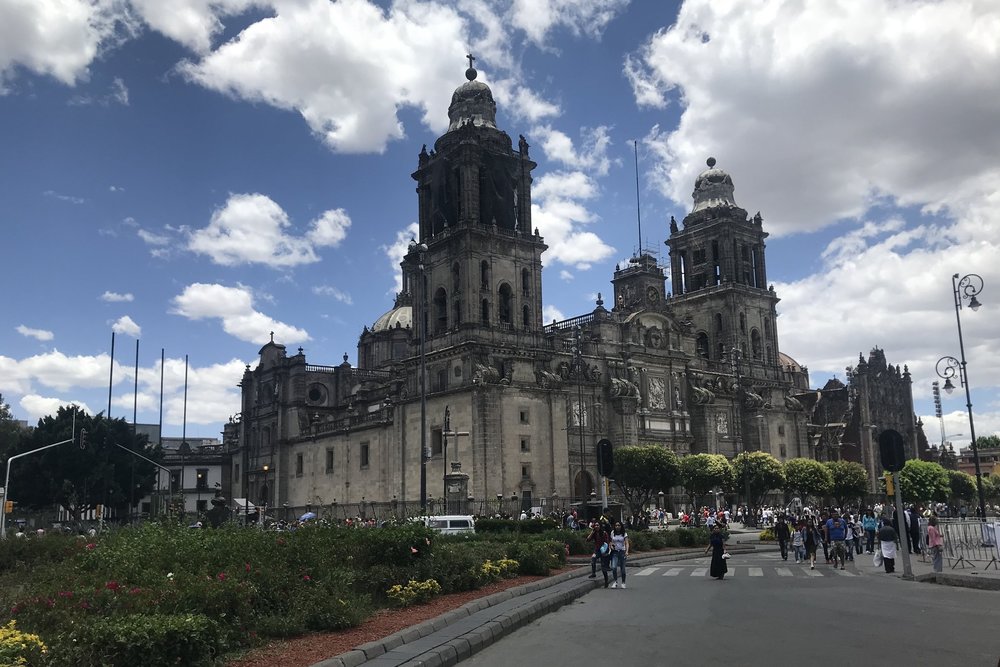
Mexico City Metropolitan Cathedral
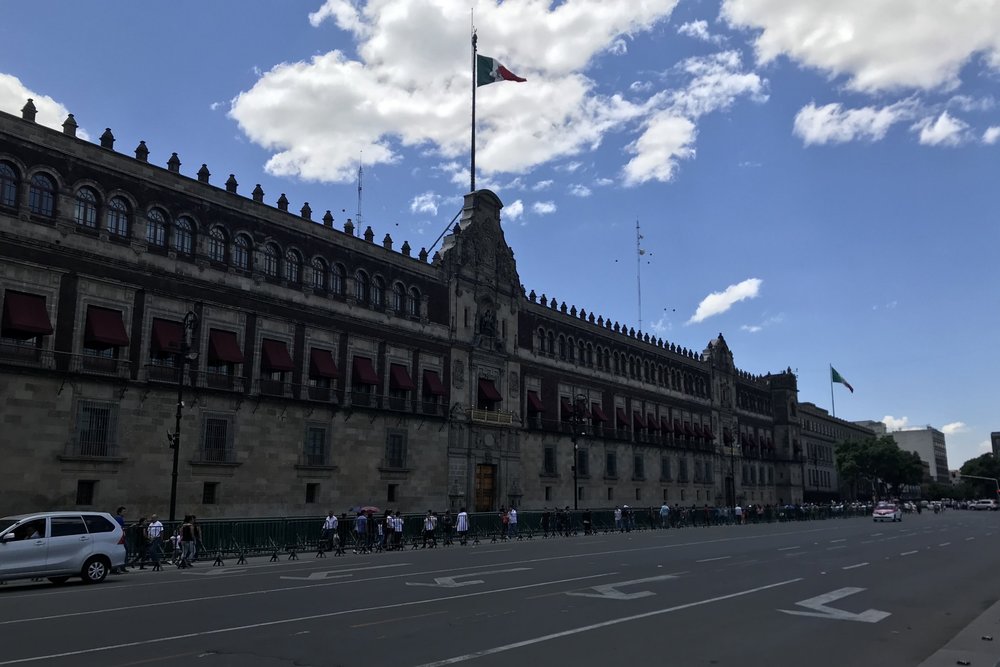
National Palace
10am | Madero Street
Branching off from the square, the flow of the crowds naturally funnels you towards Avenida Francisco Madero, a pedestrian street lined with cafes, shops, and notable buildings. You can easily lose a few hours ducking in and out of the establishments here, although many of the brands here have stores worldwide, so make some time for the local galleries and outdoor exhibits instead.
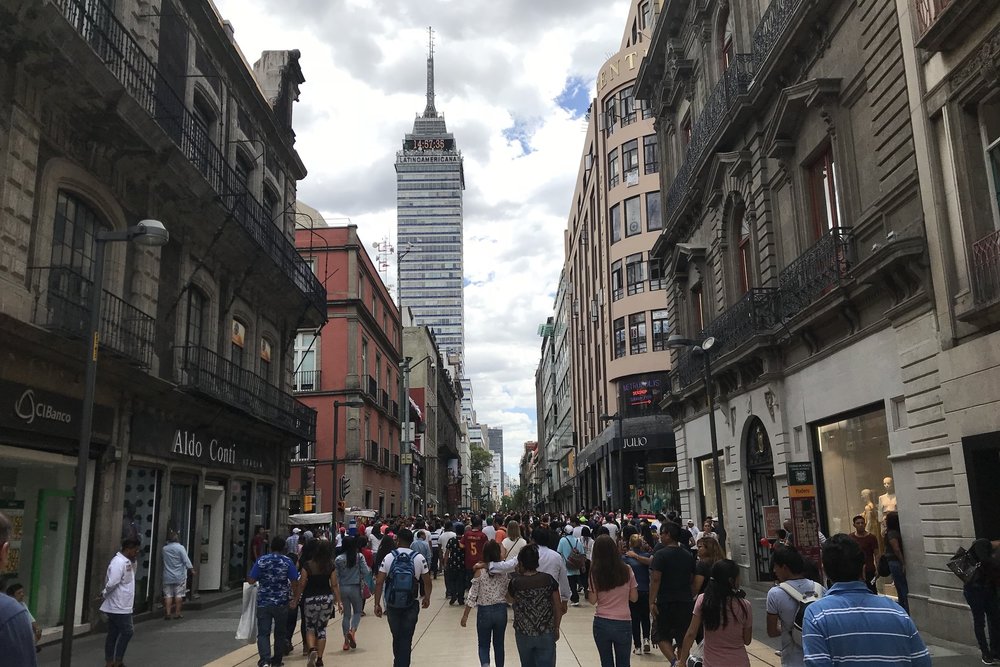
Madero Street
If going “up the tower” when you arrive in a new place is your thing, then the Torre Latinoamericana and its observation deck awaits at the end of the street. You get a 360˚ panoramic view of the sprawling Mexico City urban area, the distinctive red clay rooftops of the city unfolding as far as the eye can see.
If it’s time for a midmorning snack or an early lunch, you can’t miss the countless vendors operating in this part of the Centro Histórico. Enchiladas – classic Mexican tortillas with meat fillings. Elotes – barbecued “street corn” with chilli and garlic. Chilaquiles – a traditional dish of fried tortilla chips slathered in sauce. Tacos al pastor – the kind of tacos you came to Mexico for. Oh and of course, churros – simple pleasures until the very end.
Best of all, everything is CHEAP, and you can easily fill your stomach, and then some, for about $3.
[foogallery id=”16937″]
12pm | Museum Hopping
No visit to Mexico City is complete without spending some time immersed in its fantastic cultural settings. Begin at the Palacio de Bellas Artes, one of the city’s most famous buildings and one whose architecture is almost just as attention-worthy as the works that lie within. The Bellas Artes acts as a theatre, opera house, art gallery, and contemporary exhibition space rolled into one, so it’s almost certainly worth dropping in for a bit to appreciate this behemoth of a cultural institution.
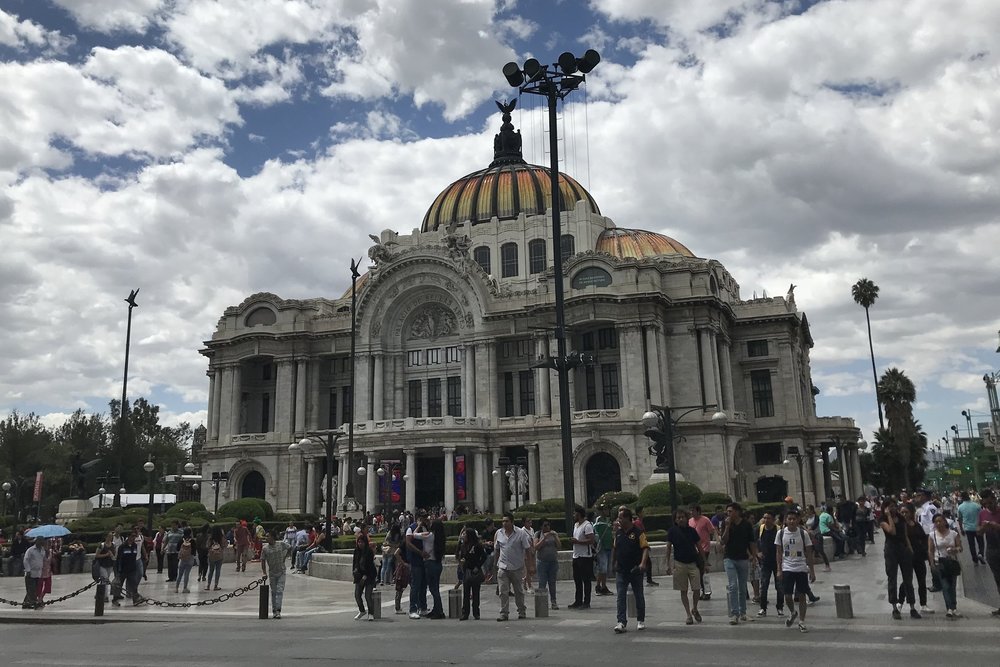
Palace of Fine Arts, Mexico City
My favourite spectacle within the Bellas Artes was the stained-glass “stage curtain” made of tiny pieces of coloured glass by Tiffany & Co in New York. Time is of the essence, though, so don’t get too lost in the details…
Immediately opposite the Palace is another museum I really enjoyed – the Museum of Memory and Tolerance, a multimedia exhibit consisting of two parts. “Memory” examines the darkest atrocities ever committed by humans, while “Tolerance” looks at the question of how we might move forward from letting our differences divide us. A visit here is something quite beautiful, and I encourage you to check it out if you can make time for it.
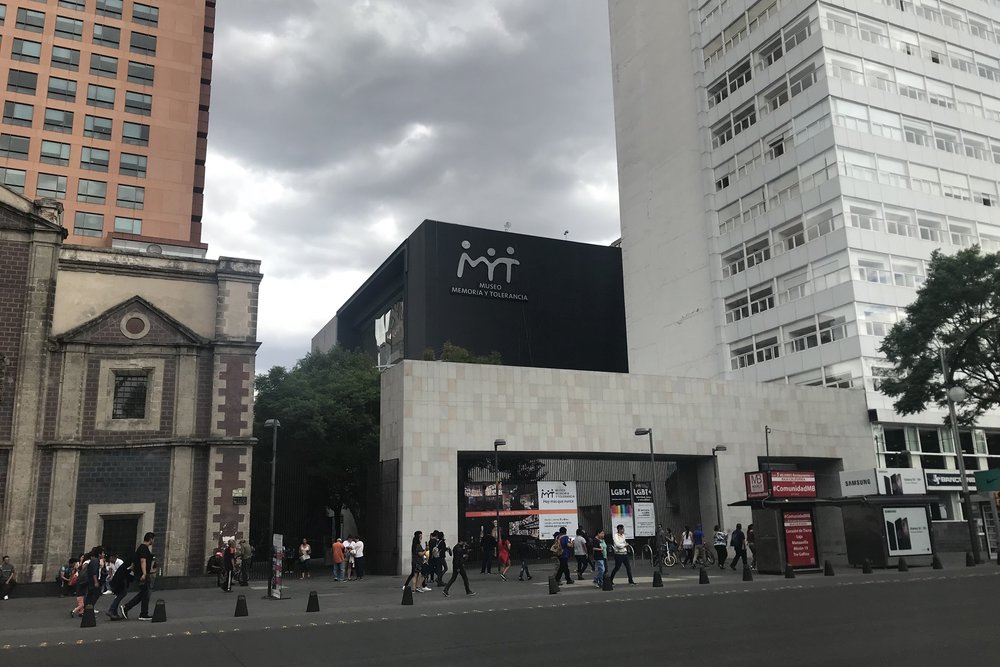
Museum of Memory and Tolerance, Mexico City
3pm | Reforma
Hit up the taqueria on the corner for a bite before heading west towards the Paseo de la Reforma. This is the wide avenue at the heart of Mexico City, its Champs-Elysées if you will – home to endless construction, high-rise office buildings, important monuments, and gatherings of the people.
The Reforma is best enjoyed via a leisurely stroll along its tree-lined sidewalks. On a weekday you can dip into a cafe and indulge in the people-watching, while the weekends might see the crowds a little sparser around here, making your walk down this famous boulevard a little more quiet.
As with any nationally significant street scene, the Reforma is dotted with monuments to significant figures from Mexico’s history, spaced out every couple of blocks or so. The most famous is perhaps the Angel of Independence, a victory column commemorating the Mexican War of Independence, which saw Mexico secede from Spain in 1821. Other points of interest include monuments to Christopher Columbus as well as Cuauhtémoc, the last Aztec Emperor.
[foogallery id=”16942″]
If the circumstances of your layover don’t happen to force upon you a quick stay at an airport hotel, the Reforma is also a great place to stay with many of the city’s top hotels, such as the Marriott Reforma, the Sheraton Maria Isabel, and the Le Méridien.
5pm | Free-for-All
One last bout of activity before digging into Mexico City’s dining scene for the evening. You can head to the green spaces of the Bosque de Chapultepec, one of the largest urban parks in the world, to catch some fresh oxygen amidst the park’s fountains, lakes, and rock formations. Chapultepec acts as the “lungs” of the city, providing the residents of a smoggy and at times suffocating metropolis with some much-needed breathing room.
Alternatively, you can hail an Uber to bring you down to the Coyoacán neighbourhood, where youthful energy and bohemian vibes are in full flow. Art lovers, in particular, will not want to miss the Frida Kahlo Museum, also known as the “Blue House” for its electric blue walls. Dedicated to the life and work of the world-renowned Mexican painter, the house has been preserved to maintain the state it was in when Frida Kahlo grew up, created her masterpieces, and eventually died within these walls.
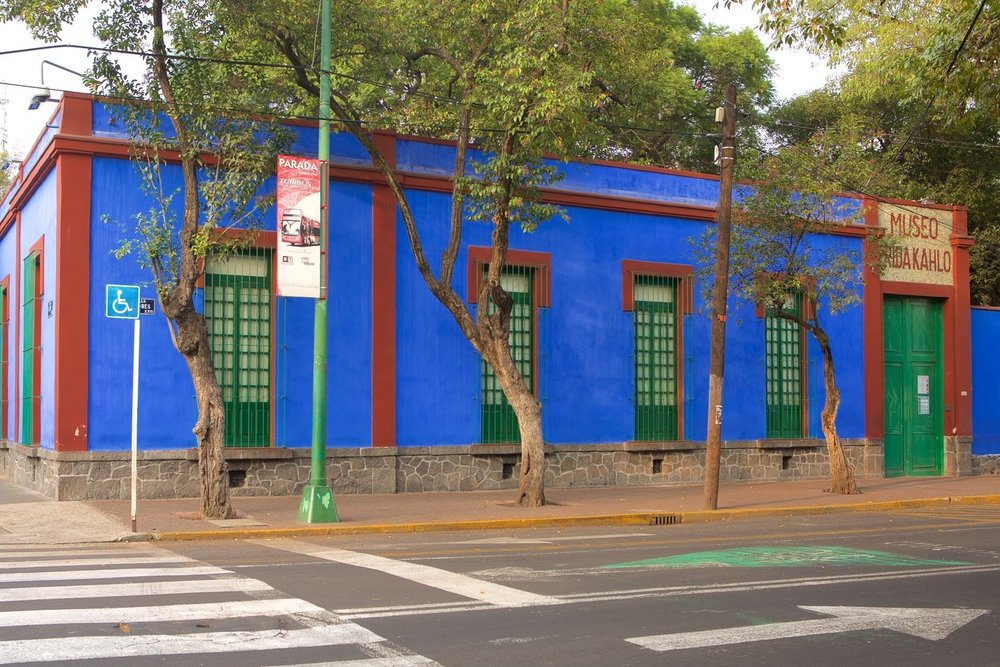
Frida Kahlo Museum
8pm | Dinner
When it comes to dinner in Mexico City, you’re spoilt for choice across the entire spectrum. There’s fine dining in the Polanco district, the likes of which you won’t find anywhere else in the world. Pujol and Quintonil are two of the most well-known institutions, where patrons arrive from all over the world ready to be dazzled. Both houses specialize in modern Mexican cuisine, with the former in particular offering a revolutionary take on ingredients traditional to the indigenous peoples of Mexico.
Then there’s the typical big-city dining scene centred around La Condesa, an area full of hip establishments that remain open well into the night, and as you might’ve already discovered, there will always be the taco stands and their associated acts, their storefronts open at every intersection, serving up quick ’n dirty favourites that are no less satisfying than their more glamorous counterparts.
You didn’t come to Mexico to be hungry, so whatever option you choose, load up on the explosive flavours of the local cuisine before carrying on along your onward journey.
Conclusion
I’m ecstatic that I finally made it to Mexico City, and I can’t wait to return on a less rigid schedule in order to learn about this place from more angles. With a wealth of attractions for all kinds of tourists, a leading gastronomy scene encompassing street food and fine dining, and all the clamours and odours you’d expect of a densely populated urban jungle, this is a city that pushes the senses in every way. Given that it’s not too far from home, I could see myself returning to Mexico City very soon, perhaps even over the course of a long weekend or two.



















